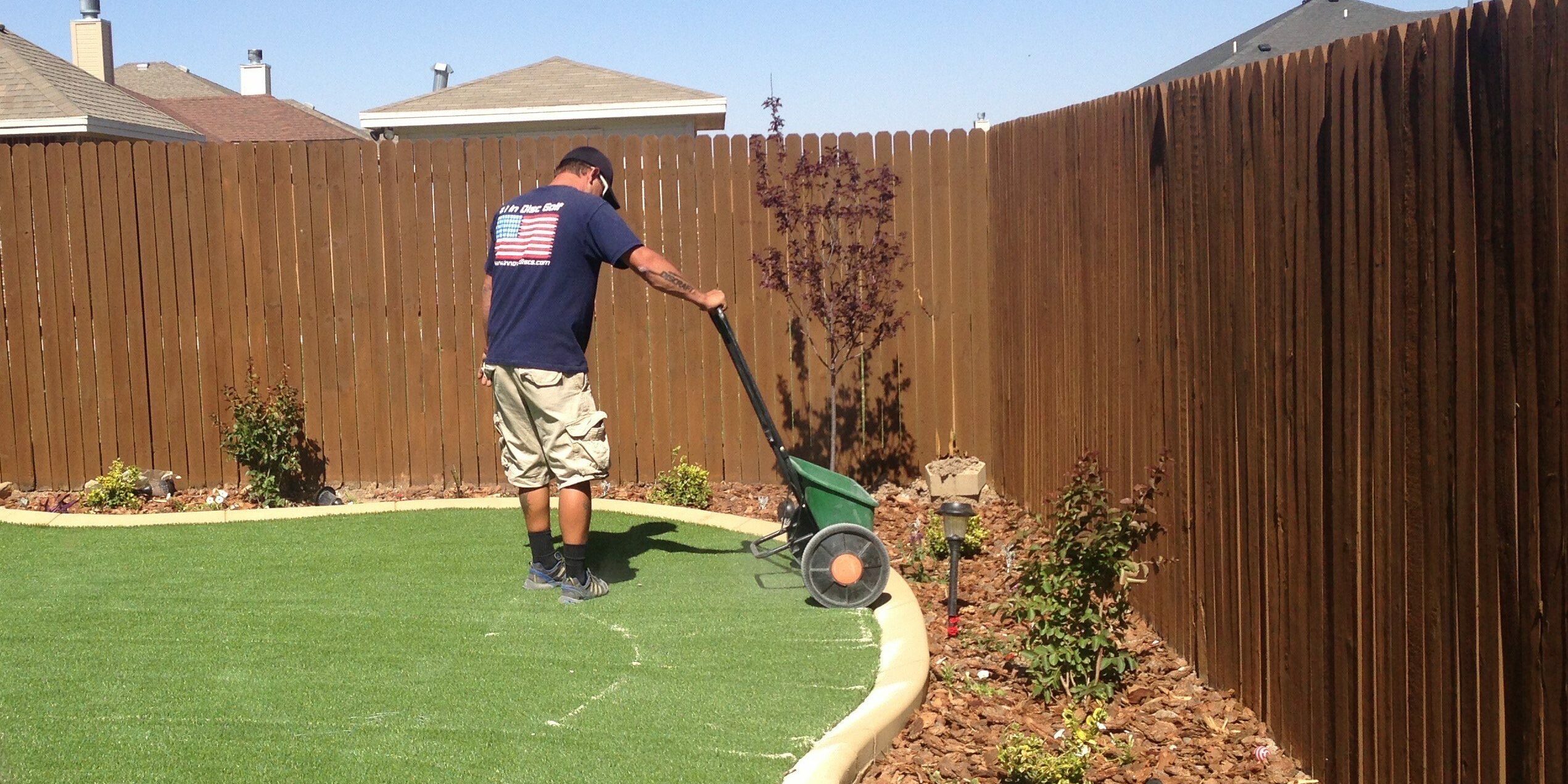You can easily maintain and enjoy artificial grass, but it’s still not easy to install. That’s why you’ll generally want to rely on the experts to install synthetic grass. Whether you’re determined to install the synthetic grass yourself or you’re just new to the process, you can still explore what you should know about your turf grass sub-base.
1. What is a Sub-base?
You install your artificial turf sub-base below your synthetic grass lay. Made up of aggregates and mixed materials, that sub-base supports a smooth, compacted surface. It’s the solid foundation you need to support proper drainage and support for your lawn. Here are the two main types:
- Crushed miscellaneous base: Crushed rock, recycled concrete, or asphalt and a sand/gravel mixture. This type is more popular because it’s cheaper, easily compacted, and offers better drainage.
- Decomposed granite (DG): Granite rock that has weathered and fractured into smaller pieces over time. This type is smoother but more costly.
2. Why Should You Install a Sub-base?
Your sub-base supports your artificial turf, giving it some structural stability. That support system is why sub-base is so important to your installation process for artificial turf. The sub-base allows your turf to remain upright even when you’ve got people walking all over it.
The sub-base’s strength ensures a longer lifespan for your artificial turf while continuing to give it that even look after installation. With the right kind of solid, compacted sub-based, your synthetic turf should hold up to regular wear-and-tear for more than ten years.
3. Is a Sub-Base Always Required?
The sub-base requirement depends on what your surface is. If you’re using artificial turf to replace natural grass, your turf needs a support structure. If you lay your artificial grass directly onto the soil, you’ll notice the uneven surface over time as expansion and contraction takes place.
If installing your artificial turn on concrete or decking, you probably don’t need to worry about a sub-base. The existing structure will support your turf while lending longevity as it faces the impact of foot traffic and other impacts.
4. Do You Need a Weed Membrane?
At Golf Greens Texas, we typically recommend using a weed membrane to separate your artificial turn from your aggregate and prevent weed growth. The aggregate mixes with the underlying dirt if you don’t install a barrier. So, you might notice the sinking effect once the synthetic turf installation is completed.
How to Get Guidance on Artificial Turf Installation
At Golf Greens Texas, we’re here to help you find the perfect synthetic grass products for your home or business. As industry leaders, we help you with all your artificial grass installation needs whether you’re a distributor, installer, or homeowner. To learn more about the artificial turf services and support we offer, call Golf Greens Texas at (806) 559-7048 or email us at [email protected]. [/vc_column_text][/vc_column][/vc_row]







